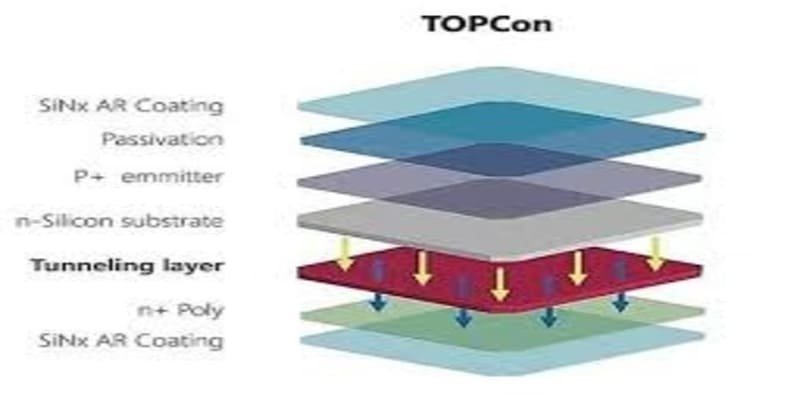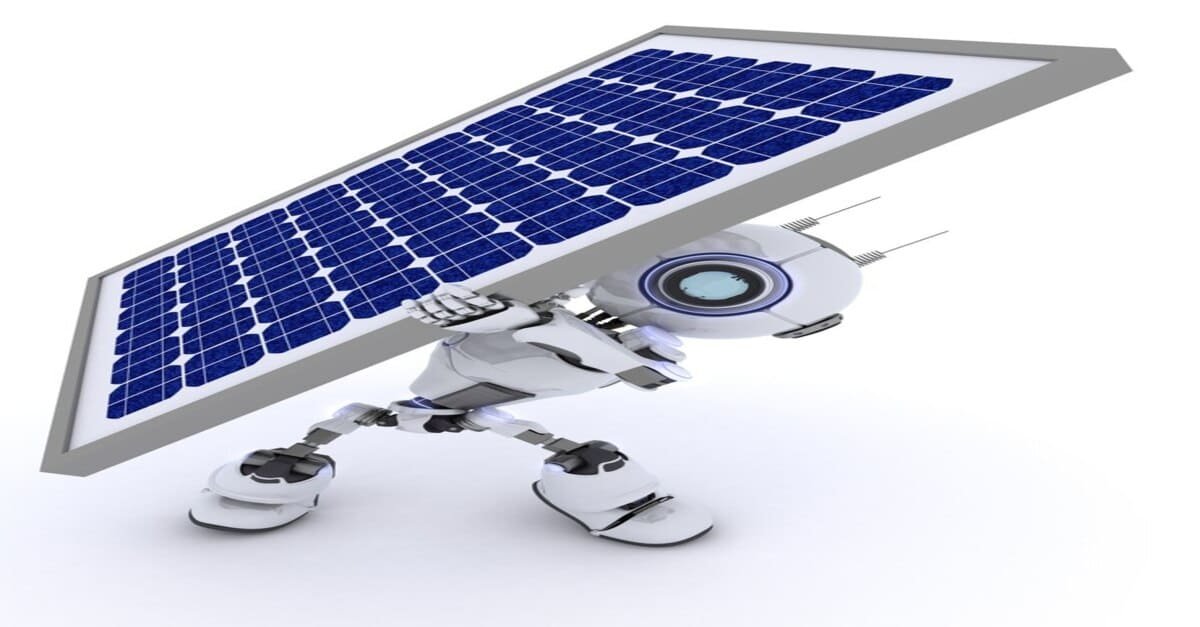Keeping up with the latest advancements is essential for anyone hoping to effectively utilize the sun’s power in the quickly changing field of solar energy. The technology known as Tunnel Oxide Passivated Contact, or TOPCon, is one such innovation that has gained popularity. This ground-breaking method could significantly advance solar technology by improving the performance and efficiency of solar panels. This in-depth manual will go over the definition of TOPCon technology, its operation, and its many advantages over traditional solar solutions.
What is TOPCon Technology?
TOPCon technology is a state-of-the-art development in the production of solar panels. It is a term for Tunnel Oxide Passivated Contact, and its purpose is to increase solar cell efficiency by lowering internal electrical losses in the cell structure. The key of TOPCon technology is its capacity to maximize the rate at which solar radiation is converted into electrical energy by improving the electric current flowing across the solar cell.
How Does TOPCon Technology Work?
The special cell structure of TOPCon technology is what makes it so magical. Between the highly doped polysilicon layer and the silicon substrate, it incorporates a thin layer of silicon oxide. This arrangement makes the creation of a tunneling junction possible, greatly lowering surface recombination losses, a typical efficiency bottleneck in conventional solar cells.
Materials Required to Manufacture TOPCon Solar Panels
In addition to the usual components used in photovoltaic (PV) manufacturing, TOPCon solar panels require high-purity silicon, silicon oxide, and polysilicon. What distinguishes TOPCon panels from others is the accuracy with which these materials are layered, improving both their longevity and performance.
- High-purity silicon
- Silicon oxide
- Polysilicon
- Standard photovoltaic (PV) manufacturing materials
- Including anti-reflection coatings, conductive grids, and encapsulants
- These materials are used to enhance the efficiency and longevity of TOPCon panels.
- Precision in layering these materials is crucial for optimal performance.
- The use of high-quality materials ensures the durability and reliability of TOPCon panels.
- Although many of these materials are also often used in the production of conventional solar panels, TOPCon panels are unique due to the way in which they are applied in their cell structure.
Structure of the TOPCon Solar Panel
The multi-layered structure of a TOPCon solar panel comprises a thin silicon oxide layer, a highly doped polysilicon layer, and a base n-type or p-type silicon layer. To further defend against environmental elements, this structure is coated with anti-reflective coatings and enclosed in sturdy glass and backing materials.

-
Multi-layered approach
What differentiates TOPCon solar panels from conventional solar cells is their distinct composition. By using many layers of particular materials, these panels can function better overall and attain higher efficiency rates.
-
Base n-type or p-type silicon layer
Usually, high-purity silicon makes up the base layer of a TOPCon panel. This layer conducts electricity and is the basis for the rest of the panel’s construction.
-
Thin silicon oxide layer
A key component of TOPCon technology is the thin layer of silicon oxide that sits between the highly doped polysilicon layer and the base layer. By serving as a tunneling junction, it enhances electron flow and lowers losses from surface mixing.
-
Highly doped polysilicon layer
Highly doped polysilicon makes up the top layer of a TOPCon panel. Because there are more impurities in this layer, conductivity and electron flow are improved.
-
Anti-reflective coatings
Additionally, TOPCon panels include surface-applied anti-reflective coatings to decrease light reflection and boost light absorption. Higher energy conversion rates and overall efficiency are the outcome of this.
-
Encapsulation
TOPCon panels are encased in robust glass and backing materials to shield the sensitive cell structure from external influences. This guarantees their durability and dependability in a range of weather situations.
The efficiency of TOPCon Solar Panels
Compared to conventional solar panels, TOPCon solar panels frequently have efficiency rates of more than 22%. Due to their higher efficiency, TOPCon solar panels are a desirable choice for both residential and commercial applications since they can produce more electricity from the same quantity of sunshine.
Types of TOPCon Solar Panels
Solar panels with monocrystalline and multicrystalline crystals can both use TOPCon technology. The most widespread association with it, though, is with monocrystalline panels because of their increased efficiency and suitability for the TOPCon production process.
Applications of TOPCon Solar Panels
TOPCon solar panels have a wide range of applications, including:
- Residential rooftops
- Commercial buildings
- Utility-scale solar farms
- Off-grid systems
- Battery charging systems
- And more
TOPCon panels can be used for a wide range of energy applications, from tiny home setups to large-scale commercial and industrial applications, due to their great efficiency and versatility. Furthermore, they are a dependable choice for long-term energy solutions due to their lifespan and resilience.
Benefits of TOPCon Technology
The introduction of TOPCon technology brings several compelling benefits, including:
- Higher Efficiency: By reducing electronic losses, TOPCon panels convert more sunlight into electricity.
- Improved Longevity: The advanced materials and manufacturing techniques extend the lifespan of TOPCon panels.
- Enhanced Performance in Low Light: The technology ensures better performance in low-light conditions, such as dawn, dusk, and cloudy weather.
Comparison TOPCon, HJT, and PERC Solar Panels
The next generation of solar cell efficiency improvements is represented by TOPCon and HJT (heterojunction technology), whereas PERC (passivated emitter and rear cell) technology has long been the norm. Topcon reduces recombination losses even more than PERC, giving it an advantage. Because TOPCon technology is compatible with current silicon solar cell manufacturing techniques, it is widely seen as more scalable and possibly cost-effective than HJT.
| Feature | PERC | HJT | TOPCon |
| Technology | Passivated Emitter and Rear Cell | Heterojunction | Tunnel Oxide Passivated Contact |
| Efficiency | Up to 23% | Up to 24.5% | Up to 28% |
| Manufacturing Complexity | Low | High | Medium |
| Cost | Lower | Higher | Lower than HJT |
| Temperature Sensitivity | Moderate | Low | Low |
| Low-Light Performance | Good | Excellent | Excellent |
| Bifaciality | Limited | High | Moderate |
| Humidity Sensitivity | No | High | Low |
TOPCon Solar Panel Manufacturers
Leading businesses, including LONGi Solar, JinkoSolar, and Trina Solar, have adopted TOPCon technology. By incorporating it into their products, these firms are pushing the limits of solar efficiency and dependability.
Installation Process of TOPCon Solar Panels
The installation process for TOPCon solar panels is similar to that of traditional panels.
- Site assessment: Before installing TOPCon solar panels, a site assessment needs to be performed to determine the best location for maximum sunlight exposure.
- Mounting structures: The next step is to mount the panels on a suitable structure, such as a rooftop or ground-mounted system. This may involve drilling holes and securing rails or brackets to support the panels.
- Electrical wiring: Once the panels are securely mounted, electrical wiring is installed to connect them in a series or parallel circuit. This ensures the proper flow of electricity from the panels to the inverter.
- Inverter connection: The final step is connecting the panels to an inverter, which converts the direct current (DC) generated by the panels into alternating current (AC) that can be used to power homes or businesses.
- Optional battery installation: In some cases, a battery may also be installed to store excess energy generated by the TOPCon solar panels for later use.
- Final inspection: After installation, a final inspection is typically performed to ensure all components are properly connected and functioning correctly.
- Maintenance and monitoring: Regular maintenance and monitoring of the TOPCon solar panels are essential to ensure optimal performance and longevity. This may involve cleaning the panels, checking for any potential issues, and making necessary repairs or replacements.
For many years to come, TOPCon solar panels can supply dependable and effective renewable energy with proper installation and upkeep. Thus, it’s crucial to
Pros and Cons
Here are a few advantages of topcon solar panels.
Pros:
- Higher energy conversion efficiency
- Longer lifespan
- Better performance in varied lighting conditions
Cons:
- Higher initial cost compared to standard panels
- Limited availability as manufacturers are still adopting the technology
Conclusion
With TOPCon technology, solar panel performance and efficiency have advanced significantly. For those wishing to get the most out of their solar investment, TOPCon panels present a promising alternative by resolving significant drawbacks of earlier technology. As the technology develops and becomes more accessible, it is expected to play a major part in the global switch to renewable energy sources.
